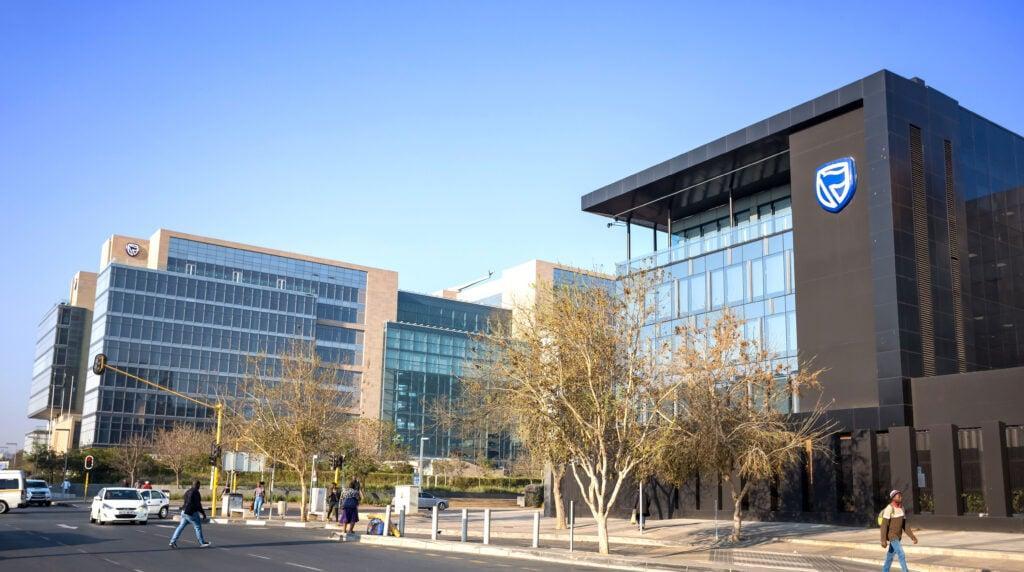Africa-Press – South-Africa. Standard Bank has updated its sustainable financing targets, with the bank aiming to mobilise over R450 billion in funding by 2028.
The bank’s previous target was for R250 billion in sustainable financing by 2026, as it faced criticism for its role in financing oil pipelines and gas projects in Africa.
While prioritising renewable energy, Standard Bank also supports a broader range of activities that contribute to the decarbonisation of Africa’s economies.
The bank continues to finance new oil and gas projects, provided they are designed and implemented with robust environmental and social risk controls.
This balanced approach includes limiting upstream oil and gas exposure to less than 30% of the energy portfolio and less than 3% of the bank’s total loans and advances, to reduce the physical intensity of the portfolio by 10% by 2030.
The bank has already financed R177 billion worth of sustainable projects since 2022, with over R50 billion mobilised in 2023 and R74 billion in 2024.
These new targets for the bank follow its unveiling of fresh performance targets for the next three years, after its annual results for 2024 were released in March.
Standard Bank stated that it is targeting headline earnings per share growth of up to 12% between 2026 and 2028. That compares with a compound annual growth rate of 10% in the 10 years to 2024.
The bank’s targets for the five years from 2020 to the end of 2025 included an average revenue growth of between 7% and 9%, a significantly lower cost-to-income ratio of 50% and a return on equity of 17% to 20%.
To achieve its new targets, the bank is focusing on three key areas of growth – energy and infrastructure development, private banking, and African expansion.
Sustainable financing is a key part of the bank’s plan to dominate energy and infrastructure development by leveraging its balance sheet.
South Africa and the broader continent’s need to develop infrastructure, particularly relating to energy, presents significant lending opportunities for Standard Bank.
“We think that the opportunity to invest in rolling out the infrastructure needed to drive economic growth in South Africa and Africa is massive,” CEO Sim Tshabalala said.
In South Africa, the bank is focused on playing a key role in the buildout of renewable energy, rolling out transmission lines, and developing logistics infrastructure through its Corporate and Investment Banking (CIB) division.
“This presents a huge opportunity for our business, not only from a lending point of view but also from the ancillary business that will come with it through the jobs created and increased value creation that we can capture through our other operating units,” Tshabalala said.
R1 trillion opportunity
South African banks are increasingly competing to finance South Africa’s growing renewable energy sector, with some valuing the investment opportunity at R1 trillion.
Demand from South African businesses and households for alternative energy sources has skyrocketed in the past few years.
For example, loans from Standard Bank for renewable energy projects have grown to four times the amount lent for non-renewable energy projects.
In 2024, the bank’s energy supply ratio, the share of finance directed towards renewable power generation relative to that for non-renewable power generation, was 5.96 times.
While this is partly driven by the need for businesses to reduce their carbon footprint, the main driver in South Africa is the need to provide a solution to the country’s energy crisis.
Standard Bank estimates he value of the energy transition in South Africa to be R1 trillion, and it wants to capture a significant portion of the value.
Charles Russell of Standard Bank Securities explained how the bank arrived at a value of R1 trillion for the renewable transition in South Africa.
Russell calculated that of the 1.6 million bondholders in South African households, approximately 1 million may be able to comfortably take on more credit.
If each of them installed solar panels or other alternative energy solutions in their homes for R250,000, the total credit opportunity for banks would be R250 billion.
Corporations and businesses consume most of the electricity used in South Africa (80%), with households using the rest (20%).
However, some industries, such as mining, have a lot of money and don’t need to borrow money to pay for their energy needs.
So, Russell assumed that corporations and businesses would invest three times more in energy solutions than households, which would mean an investment of R750 billion.
“That’s about a 25% increase in the overall stock of loans in South Africa, so funding of alternative energy supply is not a small theme,” Russell said.
For More News And Analysis About South-Africa Follow Africa-Press






